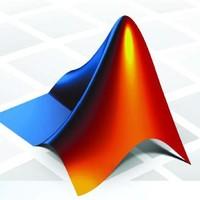A concept of drone launched short range rockets (DLSRR) is presented. A drone or an aircraft rises DLSRR to a release altitude of up to 20 $km$. At the release altitude, the drone or an aircraft is moving at a velocity of up to 700 $m/s$ and a steep angle of up to 68$^o$ to the horizontal. After DLSRRs are released, their motors start firing. DLSRRs use slow burning motors to gain altitude and velocity. At the apogee of their flight DLSRRs release projectiles which fly to the target and strike it at high impact velocity. The projectiles reach a target at ranges of up to 442 $km$ and impact velocities up to 1.88 $km/s$. We show that a rocket launched at high altitude and high initial velocity does not need expensive thermal protection to survive ascent. Delivery of munitions to target by DLSRRs should be much less expensive than delivery by a conventional rocket. %% Even though delivery of munitions by bomber aircraft is even less expensive, a bomber needs to fly close to the target, while a DLSRR carrier releases the rockets from a distance of at least 200 $km$ from the target. %% All parameters of DLSRRs, and their trajectories are calculated based on theoretical (mechanical and thermodynamical) analysis and on several MatLab programs.
翻译:提出了无人驾驶飞机发射短程火箭(DLSR)的概念;无人驾驶飞机或飞机将DLSRR升至释放高度,最高达20美元;在释放高度,无人驾驶飞机或飞机以速度移动,速度高达700美元/美元,斜角高达68美元/美元/水平;在DLRRR释放后,其发动机开始发射;DLSRR使用慢速燃烧的发动机提高高度和速度;在其飞行的远地点,DLSRRR发射飞向目标并以高冲击速度打击目标的射弹;在释放高度高度时,无人驾驶飞机或飞机以最高达442美元/美元/美元/美元/美元/美元/美元/美元/美元/美元/美元/美元/美元/美元/美元/美元/美元/美元/美元/美元/美元/美元/美元/美元/美元/美元/美元/美元/美元/美元/美元/美元/美元/美元/月/美元/美元/月/美元/美元/美元/美元/美元/美元/美元/美元/美元/美元/美元/美元/美元/美元/美元/美元/美元/美元/美元/美元/美元/美元/美元/美元/美元/美元/美元/美元/美元/美元/美元/美元/美元/美元/美元/美元/美元/美元/美元/美元/美元/美元/美元/美元/美元/美元/美元/美元/美元/美元/美元/美元/美元/美元/美元/美元/美元/美元/美元/美元/美元/美元/美元/美元/人/人/人/人/人/人/人/人/人/人/人/人/人/人/人/人/人/人/人/人/人/人/人/人/人/人/人/人/人/人/人/人/人/人/人/人/人/人/人/人/人/人/人/人/人/人/人/人/人/人/人/人/人/人/人/人/人/人/人/人/人/人/人/人/人/人/人/人/人/人/人/人/人/人/人/人/人/人/人/人/人/人/人/




